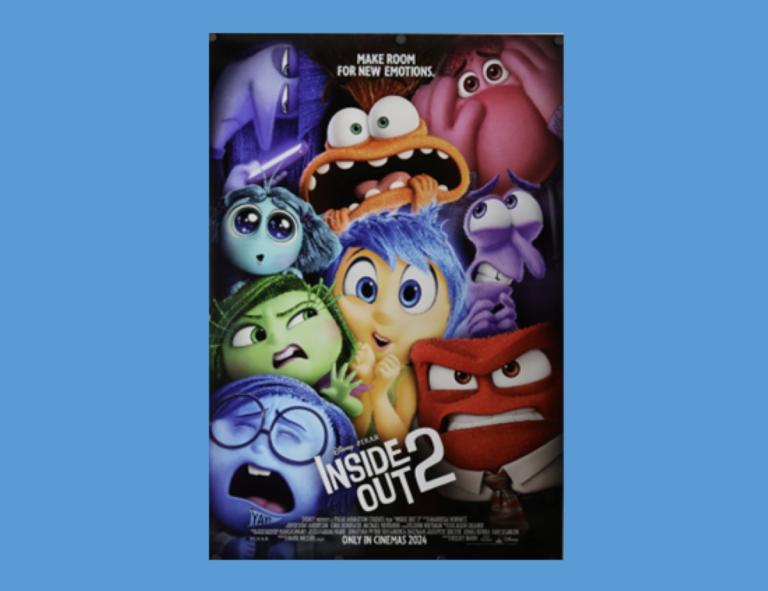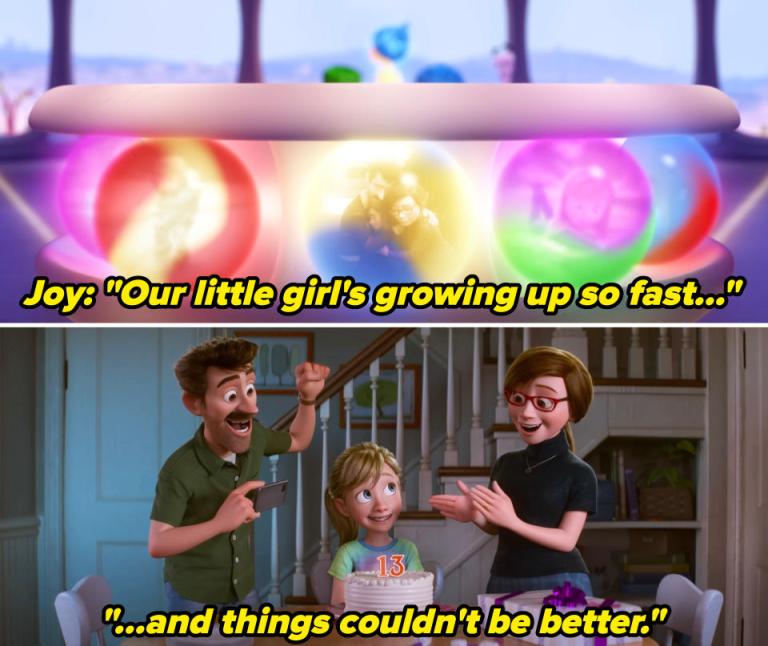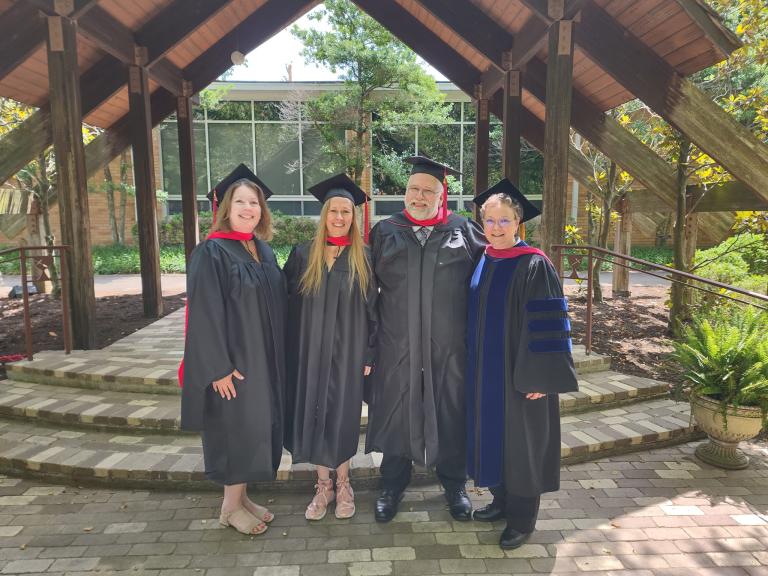Inside Out 2 is the long-awaited sequel to one of the most moving animated films of our time. As a seminary professor, I see parallels with the process of theological education and the journey of faith.

Spoiler alert: High. This review discusses major plot points and characters as well as reveals about the film’s ending.
Inside Out was revelatory
The 2015 Pixar animated movie Inside Out was one of the most imaginative and accurate portrayals of the inner workings of a child’s mind I’ve ever seen. The film tells the story of 11-year-old Riley struggling with the move to a new city and school from the point of view of the five emotions that jockey for position within her. Joy, Sadness, Fear, Disgust, and Anger are iconic representations of the feelings that shape her interpretation of her formative memories. The crisis of losing her friends and home forces the emotions to learn to work together to keep her from running away and putting herself in danger.
Inside Out worked so well because Pixar figured out how to layer content for three different audiences: young children, teens, and adults.
When my husband and I watched it with our children, then ages 11 and 8, the movie made each of us laugh for different reasons. And cry for different reasons.
For me, one of the most emotional moments was when Riley’s imaginary friend, Bing Bong, who she hadn’t thought about in years, makes the ultimate sacrifice. He gives up his life in Riley’s subconscious for her to move through her depression and integrate her emotions in a more holistic and complex way. I tearily recalled my own imaginary friends that, somewhere along the way, receded to faded memories so that I could grow up and find my way with new possibilities.
Inside Out 2: Make room for new emotions
Inside Out 2 finds Riley two years later with new friends, a solid relationship with her parents, and a positive identity as a cracker-jack hockey player. Joy, the emotion that narrates Riley’s story, explains that “our girl” is now developing beliefs that give her a sense of self and help her make good choices.

Joy has been culling Riley’s positive memories in order to create her positive identity. But in the process, she launches the negative memories to the Back of the Mind. In this way, the internal splitting from the first Inside Out happens again. But this time, instead of relegating merely Sad memories to a lesser status, the negative memories are rejected altogether.
Creating the sense of self
The core of Riley’s self at this point is represented by strings of light that arise from the deep well of her soul and create a radiant, symmetric design. “I’m a good person” is the primary belief about herself and this creates a stable environment for all the emotions within her.
As a seminary professor, and one who went through seminary myself decades ago, I see parallels of this stage with students who first enter theological education.
They come to seminary with the faith they’ve already constructed. Many come because they already believe in and have dedicated their life to the God they know and worship. “My faith is strong” is often one of their primary beliefs.
The French philosopher Paul Ricœur calls this stage “first naiveté.” He says that when we initially approach a text of importance, such as the Bible, we read it with a certain innocence.
We think that we are taking the Bible at face value. But in truth, we may be reading into it what we want to be there. We’ve been conditioned to read in a way that affirms our worldview. Thus, we bring our presuppositions to the text.
But soon after entering seminary, students are hurtled into a new phase of development that rocks their world and their faith.
As seminarians study the Bible and their faith through a critical lens, they experience dissonance. And it can feel like their whole worldview is being deconstructed. Because that’s exactly what’s happening.
For Riley this happens with the onset of puberty that literally deconstructs her internal command center. Suddenly her stable world is “under construction” and new emotions appear: Embarrassment, Envy, Ennui, and Anxiety. Now there are nine emotions within Riley’s central command. In the span of a minute, she can go from fear to doubt to anxiety to anger to embarrassment with breakneck speed.
But Anxiety and Joy are the two emotions that compete for control.

Outsmarting them all, Anxiety launches Riley’s core beliefs to the Back of the Mind. Then Anxiety jettisons the primary five emotions out of the command center and takes over the controls. Joy then leads her crew on the journey to find their way to the Back of the Mind, rescue Riley’s core self, and restore her beliefs.
For the Riley seen by the external world, the journey looks like a confused adolescent trying on different personas, overthinking everything, trying to impress new friends, and abandoning old ones.
For students in theological education, the process looks like questioning everything about the Bible, trying on different perspectives, overthinking everything, trying to impress professors, and sometimes abandoning old notions that don’t make sense anymore.
Students find out that their faith changes in seminary because they grow. But like Riley, it can feel like being in a world that no longer makes sense.
They begin to realize that God is even bigger, expansive, and more mysterious than they had imagined. Yet they also question what they really believe. And sometimes the challenge to one’s worldview can be too much. So some either deny what they’ve learned and devalue it altogether. Or they compartmentalize it and put it aside. Still others give too much power to their anxiety and doubts. They risk giving up on what they’ve believed in the first place: the core that constructed their faith.
This is the struggle we see with Riley – both internally and externally.
She lets Anxiety direct her choices which leads to some painful consequences. It all comes to a climax during an important hockey game that could determine her future in high school. Her drive to succeed and conquer her old fears propels her to a dangerous and violent move that injures one of her friends.
As she sits in the penalty box, all the emotions are finally back in her command center, but Anxiety has created a tornado within her. Joy cradles Riley’s core belief, but the new jagged one is firmly in place.
Instead of “I’m a good person,” her new belief is: “I’m not good enough.”
This scene is an excellent depiction of what happens in a panic attack. Riley experiences shortness of breath, pounding heart, and sweating while Anxiety realizes with horror what she’s set in motion and cannot stop. She wanted to protect Riley, which is a good thing. But in her zeal, she ended up putting Riley in an emotional whirlwind that could break her.
It’s only when all of the emotions rush to embrace Riley’s core that her sense of self begins to reintegrate.
The pieces start to come back together: her selfishness and kindness. Awkwardness and coolness. Sarcasm and sincerity. Doubt and faith. “Every bit makes her who she is,” says Joy.
In theological language, we use phrases such as being both sinner and saint, judged and justified, already and not yet. These are the paradoxes we must embrace if we are to construct a sense of self that is fully integrated in the faith journey.
Theology students who can integrate their new understanding of the Bible and their religion with their original core of faith can appropriate the new knowledge in such a way that it transforms them. They enter the process of reconstruction. Their understanding of the Bible, of God, the world, the church, and of themselves is born again. This new understanding leads to new behavior, new ways of doing, new ways of being.
In this way, the person experiences a second naiveté.
This is an informed, critical naiveté in which the person has been claimed by the new ideas in a way that leads to a renewed and more nuanced faith.
But the process doesn’t suddenly come to an end at that point. Rather, their renewed faith is open for still more transformation. Indeed, the second naiveté must remain open to revision and future change. The interpretive cycle is not a closed one. It is never finished.
Riley experiences this as she takes deep breaths and remembers her love of skating and the game of hockey that brought her here in the first place. She steps onto the rink and simply plays and glides with pure Joy – who is finally back at the console. All the other emotions step back and let Joy direct Riley’s every move.
It is a beautiful sight to behold.

Every June, our seminary holds a graduation ceremony where we celebrate our students who have finished all their courses, completed their competency exams, finished their theses and capstone projects, and earned their certificates and degrees. Watching them march down the aisle is a beautiful sight to behold. Joy is definitely at the helm!
But, of course, this isn’t the end of the story. Commencement means “beginning” as much as it celebrates a stage of completion.
In ministry, the spiral of first naivete, dissonance, deconstruction, and reconstruction is all part of spiritual growth. We repeatedly come upon something new that calls for reinterpretation and critical examination. This will lead to new perspectives, to dissonance within us. And finally, to reintegrating the ideas into a renewed faith and practices.
The spiral may not always be as intense as it is during seminary, but it will always be an aspect of ministry. The “hermeneutical circle,” as we call it in seminary, is like a series of spirals linked in a chain of faith.
What about the Deep Dark Secret?
One of the biggest teases in Inside Out 2 is the character of Deep Dark Secret. When Joy and company find themselves imprisoned in Riley’s secret memories, this mysterious lumbering figure helps them to escape. But when Joy urges him to leave the prison, too, he closes himself back in. “I’m not ready yet,” he whispers.

I thought the Deep Dark Secret would make an appearance at the end of the movie and help Riley discover the source of her Anxiety. Oddly, however, he only makes an appearance in a post-credit scene.
Perhaps the Deep Dark Secret is a seed planted for the next sequel.
My daughter, Rachel, who is a communication major in college, theorizes that Inside Out 3 will be about the next stage of Riley’s development: self-disclosure. In this stage, we might see her as an older teen falling in love and deciding how much of herself to reveal to the object of her affection. She might then experience a crisis when the person she loves and trusts betrays her.
Rachel and I speculate that the next set of emotions will be along the lines of intimacy, perhaps involving romantic love, vulnerability, confidence, and trust. And Riley might experience a crisis of faith that leads her to doubt everything and everyone – her family, friends, paramour, and herself.
Ministers, too, can experience a crisis of faith.
Sometimes it happens when a Deep Dark Secret reveals itself after decades of being hidden away. Or it can take the shape of a toxic congregation or abusive denominational leadership that destroys our trust in the church. Over the last four years, the conflagration of the Covid-19 pandemic, political polarization, stress and burnout, and the effects of misinformation have driven some pastors out of ministry altogether.
Any of these can shake the foundations of our command center, our sense of self, our relationships, and our faith. And as Joy admits in the movie, it’s a lot of work to try to hold everything together when it all seems to be working against you. For some ministers, they realize they must leave ministry and seek Joy elsewhere.
And yet, our hope remains.
We hold onto hope for renewed purpose, a renewed faith, renewed relationships, and a renewed world.
Perhaps that’s the final character we’ll see in Inside Out 3: Hope.
My thanks to Rachel Schade who contributed to this article.
Read also:
Good Omens: An Antidote to Toxic Christian Apocalyptic Fiction
Will God Forgive Us? First Reformed Film Review
Blade Runner 2049: 5 Star Review

The Rev. Dr. Leah D. Schade is the Associate Professor of Preaching and Worship at Lexington Theological Seminary in Kentucky and ordained in the ELCA. Dr. Schade does not speak for LTS or the ELCA; her opinions are her own. She is the author of Preaching in the Purple Zone: Ministry in the Red-Blue Divide (Rowman & Littlefield, 2019) and Creation-Crisis Preaching: Ecology, Theology, and the Pulpit (Chalice Press, 2015). She is the co-editor of Rooted and Rising: Voices of Courage in a Time of Climate Crisis (Rowman & Littlefield, 2019). Her newest book is Introduction to Preaching: Scripture, Theology, and Sermon Preparation, co-authored with Jerry L. Sumney and Emily Askew (Rowman & Littlefield, 2023).

















